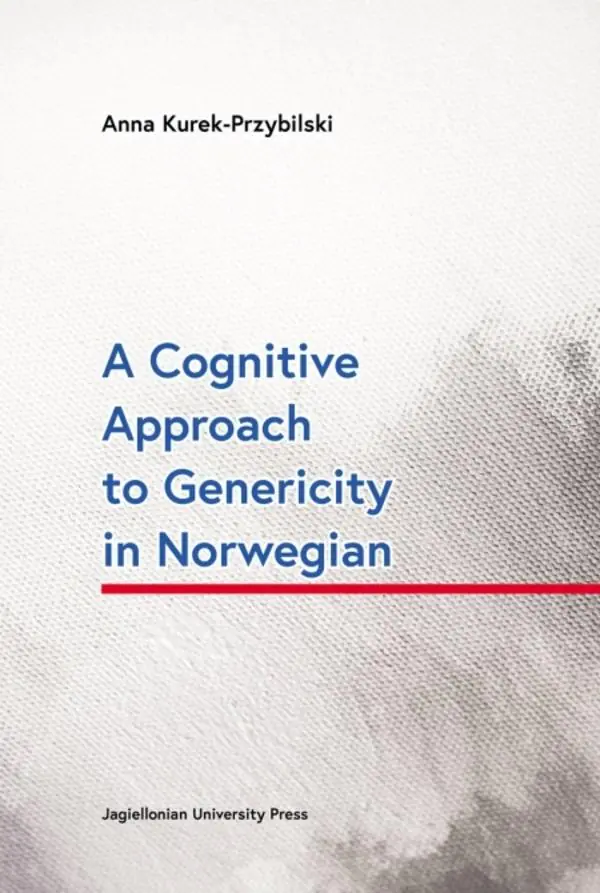Stan książek
Nasze książki są dokładnie sprawdzone i jasno określamy stan każdej z nich.






Nowa
Książka nowa.





Używany - jak nowa
Niezauważalne lub prawie niezauważalne ślady używania. Książkę ciężko odróżnić od nowej pozycji.





Używany - dobry
Normalne ślady używania wynikające z kartkowania podczas czytania, brak większych uszkodzeń lub zagięć.





Używany - widoczne ślady użytkowania
zagięte rogi, przyniszczona okładka, książka posiada wszystkie strony.
A Cognitive Approach to Genericity in Norwegian
DODAJ DO LISTY ŻYCZEŃ
Masz tę lub inne książki?
Sprzedaj je u nas
How can one discuss types and categories in Norwegian? What noun form should one choose to say that dogs bark or that cows are mammals? Is it always essential to employ a plural noun to convey generality?
This book presents a cognitive approach to understanding genericity in Norwegian. It involves the analysis of three datasets: two surveys and a specialized corpus of generic texts. These materials were examined using selected cognitive models alongside various statistical tests. This combination of qualitative and quantitative methods facilitates a thorough investigation into how genericity is expressed in Norwegian.
Anna Kurek-Przybilski's study provides an in-depth exploration of this linguistic feature, integrating cognitive approaches with other analytical models and statistical test outcomes. The project’s cognitive perspective offers a compelling examination of language data, enhanced by statistical analysis.
The research benefits from a robust dataset, highlighting actual language usage and intuitive understanding gathered from surveys conducted with carefully selected Norwegian native speakers. Additionally, the study utilizes a corpus of generic texts curated specifically for the research. The author meticulously compiled this specialized corpus, focusing on encyclopaedic texts and their categorization. This careful selection allowed for further development and adaptation of models by Radden and Radden and Driven, specifically tailored to Norwegian language nuances.
The work, reviewed by Prof. Agnieszka Gicala, underscores the careful integration of cognitive and statistical methods, providing new insights into Norwegian language structures.
Wybierz stan zużycia:
WIĘCEJ O SKALI
How can one discuss types and categories in Norwegian? What noun form should one choose to say that dogs bark or that cows are mammals? Is it always essential to employ a plural noun to convey generality?
This book presents a cognitive approach to understanding genericity in Norwegian. It involves the analysis of three datasets: two surveys and a specialized corpus of generic texts. These materials were examined using selected cognitive models alongside various statistical tests. This combination of qualitative and quantitative methods facilitates a thorough investigation into how genericity is expressed in Norwegian.
Anna Kurek-Przybilski's study provides an in-depth exploration of this linguistic feature, integrating cognitive approaches with other analytical models and statistical test outcomes. The project’s cognitive perspective offers a compelling examination of language data, enhanced by statistical analysis.
The research benefits from a robust dataset, highlighting actual language usage and intuitive understanding gathered from surveys conducted with carefully selected Norwegian native speakers. Additionally, the study utilizes a corpus of generic texts curated specifically for the research. The author meticulously compiled this specialized corpus, focusing on encyclopaedic texts and their categorization. This careful selection allowed for further development and adaptation of models by Radden and Radden and Driven, specifically tailored to Norwegian language nuances.
The work, reviewed by Prof. Agnieszka Gicala, underscores the careful integration of cognitive and statistical methods, providing new insights into Norwegian language structures.












